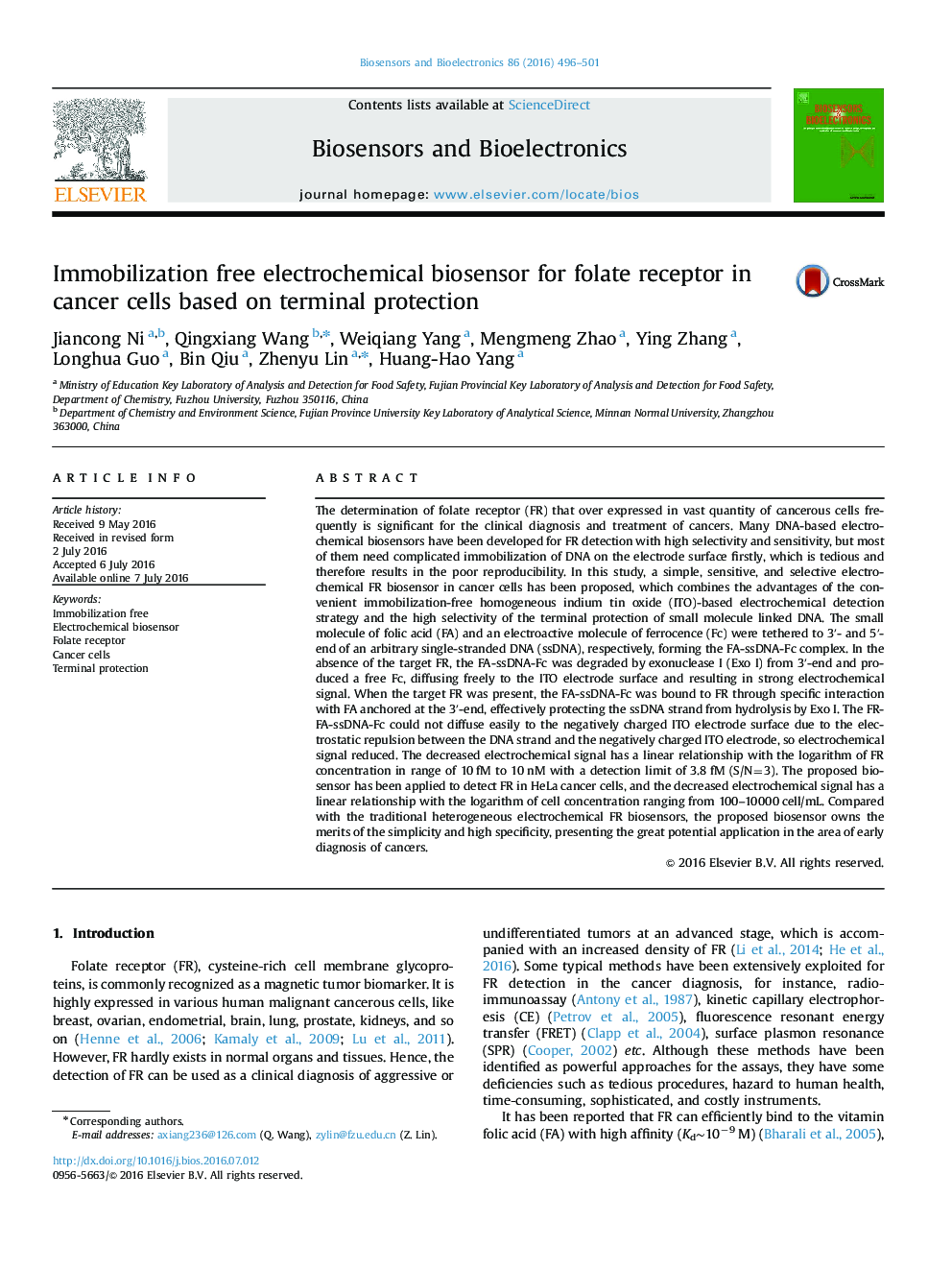| Article ID | Journal | Published Year | Pages | File Type |
|---|---|---|---|---|
| 7230224 | Biosensors and Bioelectronics | 2016 | 6 Pages |
Abstract
The determination of folate receptor (FR) that over expressed in vast quantity of cancerous cells frequently is significant for the clinical diagnosis and treatment of cancers. Many DNA-based electrochemical biosensors have been developed for FR detection with high selectivity and sensitivity, but most of them need complicated immobilization of DNA on the electrode surface firstly, which is tedious and therefore results in the poor reproducibility. In this study, a simple, sensitive, and selective electrochemical FR biosensor in cancer cells has been proposed, which combines the advantages of the convenient immobilization-free homogeneous indium tin oxide (ITO)-based electrochemical detection strategy and the high selectivity of the terminal protection of small molecule linked DNA. The small molecule of folic acid (FA) and an electroactive molecule of ferrocence (Fc) were tethered to 3â²- and 5â²-end of an arbitrary single-stranded DNA (ssDNA), respectively, forming the FA-ssDNA-Fc complex. In the absence of the target FR, the FA-ssDNA-Fc was degraded by exonuclease I (Exo I) from 3â²-end and produced a free Fc, diffusing freely to the ITO electrode surface and resulting in strong electrochemical signal. When the target FR was present, the FA-ssDNA-Fc was bound to FR through specific interaction with FA anchored at the 3â²-end, effectively protecting the ssDNA strand from hydrolysis by Exo I. The FR-FA-ssDNA-Fc could not diffuse easily to the negatively charged ITO electrode surface due to the electrostatic repulsion between the DNA strand and the negatively charged ITO electrode, so electrochemical signal reduced. The decreased electrochemical signal has a linear relationship with the logarithm of FR concentration in range of 10Â fM to 10Â nM with a detection limit of 3.8Â fM (S/N=3). The proposed biosensor has been applied to detect FR in HeLa cancer cells, and the decreased electrochemical signal has a linear relationship with the logarithm of cell concentration ranging from 100-10000Â cell/mL. Compared with the traditional heterogeneous electrochemical FR biosensors, the proposed biosensor owns the merits of the simplicity and high specificity, presenting the great potential application in the area of early diagnosis of cancers.
Related Topics
Physical Sciences and Engineering
Chemistry
Analytical Chemistry
Authors
Jiancong Ni, Qingxiang Wang, Weiqiang Yang, Mengmeng Zhao, Ying Zhang, Longhua Guo, Bin Qiu, Zhenyu Lin, Huang-Hao Yang,
